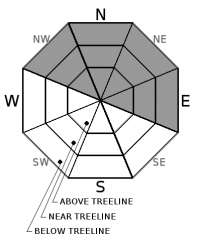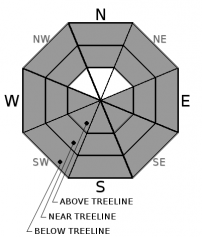| Thursday | Thursday Night | Friday | |
|---|---|---|---|
| Weather: | Partly cloudy with a slight (10%) chance of snow showers in the morning. Snow level starting at 6000 ft and increasing to 7000 ft. + during the day. | Partly cloudy becoming mostly cloudy | Mostly cloudy with a chance of showers. Snow level starting at 6000 ft and increasing to 6500 ft. + during the day. |
| Temperatures: | 42 to 48 deg. F. | 26 to 31 deg. F. | 40 to 45 deg. F. |
| Mid Slope Winds: | Southwest | Southwest | Southwest |
| Wind Speed: | 15 to 25 mph with gusts to 50 mph | 10 to 20 mph with gusts to 40 mph | 10 to 20 mph with gusts to 40 mph |
| Expected snowfall: | trace | 0 | trace |
| Thursday | Thursday Night | Friday | |
|---|---|---|---|
| Weather: | Partly cloudy with a slight (10%) chance of snow showers in the morning. | Partly cloudy becoming mostly cloudy | Mostly cloudy with a chance of showers. |
| Temperatures: | 30 to 40 deg. F. | 24 to 29 deg. F. | 30 to 40 deg. F. |
| Ridge Top Winds: | Southwest | Southwest | Southwest |
| Wind Speed: | 40 to 65 mph with gusts to 90 mph | 25 to 35 mph with gusts to 60 mph | 20 to 30 mph with gusts to 60 mph |
| Expected snowfall: | trace | 0 | trace |


























